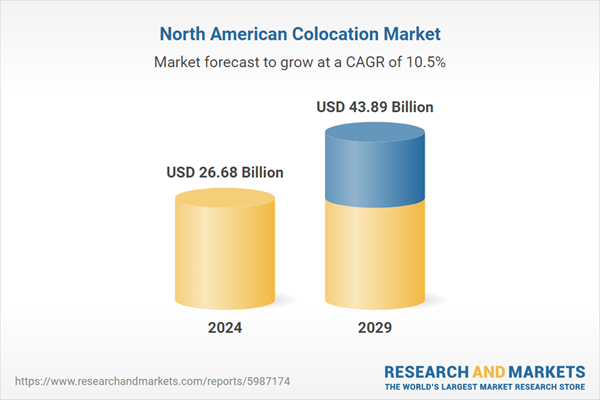Growing corporate culture and improvement in the strength of SMEs in major North American economies namely the USA and Canada has created demand for additional data storage spaces.
Colocation facilities cater to such needs of business companies for servers and computing hardware and enable them to remove in-house servers & data centers. Additional factors such as booming internet penetration, emphasis on data protection, and 5G adoption are expected to bolster the regional market growth.
Market Drivers
Establishment of data protection laws in major NA economies
United States and Canada are witnessing a significant increase in their internet and digital technology users owing to which the government of such countries is actively involved in the establishment of laws & regulations relating to data protection. For instance, in June 2022, Canada’s Minister of Innovation, Science and Justice along with the Minister of Justice and Attorney General established the Digital Charter Implementation Act 2022 which aims to provide high security and transparency during the handling of personal information of Canadian by organizations.Furthermore, US Congress representatives, in June 2022, introduced the American Data Privacy and Protection Act which aims to provide extra protection to sensitive data linked to any device or person. Such law establishment will surge the demand for colocation services owing to their high data security feature thereby boosting the market growth during the forecast period.
Growing 5G deployment and government digital schemes are driving the regional market growth.
5G deployment has increased the volume of data traffic which has made companies shift from the traditional on-premises to colocation facilities that offer much flexibility during data processing and management. To promote the usage of 5G technology necessary schemes, investments, and product launches are being undertaken by the countries in North America.For instance, Mexico’s America Movil, in February 2022, launched its 5G services in 18 major Mexico cities. Besides 5G promotion, digital schemes are being also undertaken, for instance, the Government of Canada, in August 2022, launched Digital Ambition 2022, which aims to digitize federal services and enhance cyber security and data privacy. Colocation service addresses the data handling, storage, and security concerns at both enterprise levels and the growing 5G coupled with the establishment of digital policies has provided a wider scope for such facilities in North America.
Large enterprise is expected to account for a significant share
Based on enterprise size, the North American colocation market is segmented as small, medium, and large. The large enterprise is expected to grow at a significant rate during the forecast period of the North American colocation market, owing to the investments undertaken by major North American countries such as the United States and Canada for digitizing their sectors. For instance, in March 2022, Quebec’s Education Minister announced investments of US$10 million for two years to digitize Quebec’s education network.Key Developments
- In January 2024: Carrier-neutral colocation service provider MDC Data Center announced the establishment of its two new International Fiber Crossing along the U.S. borders in Texas and Arizona to enhance the “BorderConnect Platform”.
- In November 2023: Wholesale Data Center provider H5 Data Centers announced the expansion of the company’s edge data centers in San Antonio. The expanded colocation space will have an additional 340 cabinets & 1.5MW of UPS capacity.
Segmentation:
By Type
- Retail
- Wholesale
- Hybrid
By Enterprise Size
- Small
- Medium
- Large
By Industry Vertical
- BFSI
- Communication and Technology
- Education
- Healthcare
- Media and Entertainment
- Retail & E-Commerce
- Others
By Country
- United States
- Canada
- Mexico
Table of Contents
Companies Mentioned
- Colocation America
- Iron Mountain Incorporated
- Flexential
- Digital Realty
- Equinix, Inc.
- Cyxtera Technologies Inc.
- CyrusOne
- KDDI Corporation
- HostDime Global Corp
- Whipcord Edge
- Nuday Networks
Methodology

LOADING...
Table Information
| Report Attribute | Details |
|---|---|
| No. of Pages | 114 |
| Published | May 2024 |
| Forecast Period | 2024 - 2029 |
| Estimated Market Value ( USD | $ 26.68 Billion |
| Forecasted Market Value ( USD | $ 43.89 Billion |
| Compound Annual Growth Rate | 10.4% |
| Regions Covered | North America |
| No. of Companies Mentioned | 11 |









